#industrial management
Explore tagged Tumblr posts
Text
Industrial Safety Management: A Comprehensive Overview of Lunima’s Approach
In the realm of industrial operations, safety isn't just a priority; it's a fundamental aspect that underpins every successful organization. Lunima, a leading name in industrial safety management, exemplifies this commitment to safety through its innovative and comprehensive approaches. This blog delves into the core principles of industrial safety management and explores how Lunima is setting new standards in the industry.

Understanding Industrial Safety Management
Industrial safety management is the systematic approach to ensuring the health and safety of employees within an industrial setting. It involves identifying potential hazards, implementing safety measures, and continuously monitoring and improving safety protocols. The goal is to create a safe working environment that minimizes risks and enhances productivity.
The Importance of Safety Management
Effective safety management is crucial for several reasons:
Employee Well-being: Ensuring the safety of employees is a fundamental responsibility. A safe work environment reduces the risk of accidents and injuries, promoting overall health and well-being.
Regulatory Compliance: Adhering to safety regulations and standards is not just a legal obligation but also a way to avoid fines and legal issues. Compliance demonstrates a company's commitment to safety and regulatory adherence.
Operational Efficiency: A well-implemented safety management system reduces downtime caused by accidents and injuries. This leads to smoother operations and improved productivity.
Reputation Management: A strong safety record enhances a company’s reputation, attracting talent and fostering trust with clients and stakeholders.
Lunima’s Approach to Industrial Safety Management
Lunima stands out in the field of industrial safety management by offering a holistic and proactive approach. Here’s how Lunima excels in ensuring top-notch safety standards:
1. Comprehensive Risk Assessment
Lunima begins with a thorough risk assessment to identify potential hazards in the workplace. This involves analyzing equipment, processes, and work environments to pinpoint areas of concern. By understanding these risks, Lunima can develop targeted safety strategies that address specific needs.
2. Customized Safety Solutions
One size does not fit all when it comes to safety. Lunima provides customized safety solutions tailored to the unique requirements of each industry and company. This approach ensures that safety measures are relevant and effective, addressing the particular risks associated with different industrial settings.
3. Training and Development
Training is a cornerstone of Lunima’s safety management strategy. The company offers extensive training programs designed to educate employees about safety protocols, emergency response procedures, and proper equipment usage. Regular training ensures that employees are well-informed and prepared to handle potential hazards.
4. Implementation of Advanced Technology
Lunima leverages cutting-edge technology to enhance safety management. This includes the use of safety monitoring systems, automated alerts, and data analytics to track safety performance. Advanced technology allows for real-time monitoring and quick response to potential issues, ensuring a proactive approach to safety.
5. Continuous Improvement
Safety management is an ongoing process, and Lunima embraces this philosophy through continuous improvement. The company regularly reviews and updates safety protocols based on feedback, incident reports, and industry advancements. This commitment to continuous improvement ensures that safety measures remain effective and relevant.
6. Regulatory Compliance and Certification
Adhering to industry regulations and obtaining certifications is crucial for maintaining high safety standards. Lunima ensures that all safety practices comply with relevant regulations and standards. The company also pursues certifications that validate its commitment to safety, providing clients with assurance of its adherence to best practices.
Case Studies: Lunima in Action
To illustrate Lunima’s impact on industrial safety management, let’s explore a few case studies:
Case Study 1: Manufacturing Facility Overhaul
A large manufacturing facility approached Lunima to address safety concerns related to heavy machinery and complex production processes. Lunima conducted a comprehensive risk assessment and identified several areas for improvement. By implementing customized safety solutions and providing specialized training, Lunima significantly reduced the number of workplace accidents and improved overall safety compliance.
Case Study 2: Chemical Plant Safety Enhancement
In a chemical processing plant, Lunima was tasked with enhancing safety measures due to the high-risk nature of the chemicals involved. Lunima introduced advanced safety monitoring systems and conducted extensive employee training on handling hazardous materials. The result was a marked reduction in safety incidents and improved emergency response readiness.
Case Study 3: Construction Site Safety Management
For a large-scale construction project, Lunima implemented a robust safety management system to address the inherent risks of the construction environment. This included regular safety audits, the installation of safety equipment, and ongoing training for workers. Lunima’s approach led to a safer work environment and a notable decrease in accidents on site.
The Future of Industrial Safety Management
As industries evolve, so do the challenges and opportunities in safety management. Lunima is at the forefront of this evolution, continuously exploring new technologies and methodologies to enhance safety. The future of industrial safety management will likely see greater integration of artificial intelligence, advanced analytics, and enhanced safety training programs.
Lunima’s dedication to staying ahead of industry trends and its commitment to proactive safety management positions it as a leader in the field. By embracing innovation and maintaining a relentless focus on safety, Lunima ensures that it will continue to set new benchmarks for industrial safety management.
0 notes
Text
doing some research on parapsychology as a field. in short, it's the study of how the supernatural relates to psychology, and is largely regarded as pseudoscience with only a handful of people studying it, and very very few universities will even offer a parapsych program.
so… martin, buddy, did you just google 'what degrees do people get for paranormal research' and go with the first one that popped up? you did didn't you. idiot.
#i wanna know what other jobs martin applied for and thus made up degrees for.#*applies for job as a restaurant manager* ah yes i have a degree in. food and resource economics#*applies for job at amazon* i have a bachelors in packaging dw about it (actual real degree apparently)#til bowling industry management is a real university program you can persue. i don't even need to make the joke. you get it.#tma#the magnus archives#martin blackwood#original post
346 notes
·
View notes
Text
Tallying every single tree in the kingdom. Endangered South Asian sandalwood. British war to control the forests. European companies claim the ecosystem. Failure of the plantation. Until the twentieth century, the Empire couldn't figure out how to cultivate sandalwood because they didn't understand that the plant is actually a partial root parasite, so their monoculture approach of eliminating companion species was self-defeating. French perfumes and the creation of "Sandalwood City".
---
Selling at about $147,000 per metric ton, the aromatic heartwood of Indian sandalwood (S. album) is arguably [among] the most expensive wood in the world. Globally, 90 per cent of the world’s S. album comes from India [...]. And within India, around 70 per cent of S. album comes from the state of Karnataka [...] [and] the erstwhile Kingdom of Mysore. [...] [T]he species came to the brink of extinction. [...] [O]verexploitation led to the sandal tree's critical endangerment in 1974. [...]
---
Francis Buchanan’s 1807 A Journey from Madras through the Countries of Mysore, Canara and Malabar is one of the few European sources to offer insight into pre-colonial forest utilisation in the region. [...] Buchanan records [...] [the] tradition of only harvesting sandalwood once every dozen years may have been an effective local pre-colonial conservation measure. [...] Starting in 1786, Tipu Sultan [ruler of Mysore] stopped trading pepper, sandalwood and cardamom with the British. As a result, trade prospects for the company [East India Company] were looking so bleak that by November 1788, Lord Cornwallis suggested abandoning Tellicherry on the Malabar Coast and reducing Bombay’s status from a presidency to a factory. [...] One way to understand these wars is [...] [that] [t]hey were about economic conquest as much as any other kind of expansion, and sandalwood was one of Mysore’s most prized commodities. In 1799, at the Battle of Srirangapatna, Tipu Sultan was defeated. The kingdom of Mysore became a princely state within British India [...]. [T]he East India Company also immediately started paying the [new rulers] for the right to trade sandalwood.
British control over South Asia’s natural resources was reaching its peak and a sophisticated new imperial forest administration was being developed that sought to solidify state control of the sandalwood trade. In 1864, the extraction and disposal of sandalwood came under the jurisdiction of the Forest Department. [...] Colonial anxiety to maximise profits from sandalwood meant that a government agency was established specifically to oversee the sandalwood trade [...] and so began the government sandalwood depot or koti system. [...]
From the 1860s the [British] government briefly experimented with a survey tallying every sandal tree standing in Mysore [...].
Instead, an intricate system of classification was developed in an effort to maximise profits. By 1898, an 18-tiered sandalwood classification system was instituted, up from a 10-tier system a decade earlier; it seems this led to much confusion and was eventually reduced back to 12 tiers [...].
---
Meanwhile, private European companies also made significant inroads into Mysore territory at this time. By convincing the government to classify forests as ‘wastelands’, and arguing that Europeans would improves these tracts from their ‘semi-savage state’, starting in the 1860s vast areas were taken from local inhabitants and converted into private plantations for the ‘production of cardamom, pepper, coffee and sandalwood’.
---
Yet attempts to cultivate sandalwood on both forest department and privately owned plantations proved to be a dismal failure. There were [...] major problems facing sandalwood supply in the period before the twentieth century besides overexploitation and European monopoly. [...] Before the first quarter of the twentieth century European foresters simply could not figure out how to grow sandalwood trees effectively.
The main reason for this is that sandal is what is now known as a semi-parasite or root parasite; besides a main taproot that absorbs nutrients from the earth, the sandal tree grows parasitical roots (or haustoria) that derive sustenance from neighbouring brush and trees. [...] Dietrich Brandis, the man often regaled as the father of Indian forestry, reported being unaware of the [sole significant English-language scientific paper on sandalwood root parasitism] when he worked at Kew Gardens in London on South Asian ‘forest flora’ in 1872–73. Thus it was not until 1902 that the issue started to receive attention in the scientific community, when C.A. Barber, a government botanist in Madras [...] himself pointed out, 'no one seems to be at all sure whether the sandalwood is or is not a true parasite'.
Well into the early decades of twentieth century, silviculture of sandal proved a complete failure. The problem was the typical monoculture approach of tree farming in which all other species were removed and so the tree could not survive. [...]
The long wait time until maturity of the tree must also be considered. Only sandal heartwood and roots develop fragrance, and trees only begin developing fragrance in significant quantities after about thirty years. Not only did traders, who were typically just sailing through, not have the botanical know-how to replant the tree, but they almost certainly would not be there to see a return on their investments if they did. [...]
---
The main problem facing the sustainable harvest and continued survival of sandalwood in India [...] came from the advent of the sandalwood oil industry at the beginning of the twentieth century. During World War I, vast amounts of sandal were stockpiled in Mysore because perfumeries in France had stopped production and it had become illegal to export to German perfumeries. In 1915, a Government Sandalwood Oil Factory was built in Mysore. In 1917, it began distilling. [...] [S]andalwood production now ramped up immensely. It was at this time that Mysore came to be known as ‘the Sandalwood City’.
---
Text above by: Ezra Rashkow. "Perfumed the axe that laid it low: The endangerment of sandalwood in southern India." The Indian Economic and Social History Review, Volume 51 (2014), Issue 1, pages 41-70. First published online 10 March 2014. DOI: 10.1177/0019464613515533 [Bold emphasis and some paragraph breaks/contractions added by me. Italicized first paragraph/heading in this post added by me. Presented here for commentary, teaching, criticism purposes.]
#a lot more in full article specifically about#postindependence indian nationstates industrial extraction continues trend established by british imperial forestry management#and ALSO good stuff looking at infamous local extinctions of other endemic species of sandalwood in south pacific#that compares and contrasts why sandalwood survived in india while going extinct in south pacific almost immediately after european conques#abolition#ecology#imperial#colonial#landscape#indigenous#multispecies#tiger#tidalectics#archipelagic thinking#intimacies of four continents#carceral geography#geographic imaginaries#haunted
247 notes
·
View notes
Text


i noticed that mr enoch drebber has never officially had a completed fullbody reference, so i took matters into my own hands and completed him myself just for fun. it felt like dusting off and repairing an old rusty pocketwatch lmao
i added his original reference for both comparison and convenience. (he is rather tall) (and there is a bonus under the cut)

#oh my GOD this was agonizing. but so worth it. i really had some difficulties with this#but it was fun to see how far i can utilize my artistic abilities.#also you may use him if you would like. i would not want my efforts to go to waste#my goth ass cannot comprehend color very well#i was also listening to some hardcore industrial music while drawing this and i think that’s one of the ways i managed to complete this lma#enochposting#shit i draw#enoch drebber#the great ace attorney#the great ace attorney chronicles#ace attorney#dai gyakuten saiban#great ace attorney#tgaa#tgaac#aa#dgs#i wont be able to draw for DAYS agh#MY NAIL BROKE WHILE I WAS DRAWING THIS.#do it for him…
108 notes
·
View notes
Note
Hi! Your baby lion post made me think of a question. How do zoos tell the difference between animals? Obviously if a cat or dog has kittens you can put a collar on them or some animal safe dye so you can tell the difference, but zoos can't do that for like 99% of their animals.
Do they just take lots of pictures and figure out identifying markings and then just hope they can keep track of which animal is which as they're growing?
This really depends on the species, and the specific animals.
With adult animals, distinguishing features are generally used (although I'm not sure how this works for fish / insects, or if they're even tracked as individuals). Sometimes, though, I've seen zoos use other things: when I went to the Oregon Zoo around Halloween last year, their female polar bears each had a different paw with a shaved patch. It was part of their medical training, but the different location also allowed the staff to tell them apart much more quickly at a glace.
For animals like hoofstock who live in large herds or are very visually similar, colored ear tags can work like the collars you mentioned. They're commonly used in other animal management industries, and while they might not look the most appealing to guests, they're functional and minimally invasive compared to other options.
We've got lots of current and past zoo people on tumblr, I'd love to hear what else your zoos do!
249 notes
·
View notes
Text






INDUSTRY 3x03 | 2x08
#industry#yasmin kara hanani#marisa abela#henry muck#kit harington#industry hbo#industry bbc#industryedit#tvedit#hboedit#mabelaedit#*#no idea how i managed to color the night scene better than the well-lit restaurant lmao#also forgot to change the caption color but w/e#she just wants to be real
146 notes
·
View notes
Text
So, I will be joining the ranks of unemployed animation ppl in September. Several of my crew mates have already been posting about their contract ends. It ah...it sucks. This has been the best job I've ever had, and I've been incredibly lucky to work with such an amazing team. I hope they all find equally great jobs after. I'm going to try and stay in animation but will probably have to go back into tech. Of course if companies actually start greenlighting shows again then hey, job's back.
Sigh.
I hope y'all enjoy season 2 of Castlevania Nocturne when it comes out. We worked our butts off on it, and I'm really proud of everyone.
#work stuff#animation industry#castlevania#castlevania nocturne#give love to the crew#it's a hard show to animate#very complex art style#but they manage to do it
135 notes
·
View notes
Text
"Survival" game: Press X to destroy that tree bare-handed. Now you have Wood, press Enter to access your inventory and turn Wood into a Crafting Table. Now press E on your Crafting Table and use Coal and Iron to make a Steam Engine.
#minecraft and its consequences etc. etc.#I just think that if you're managing industrial supply chains 15 minutes into the game you shouldn't call it a 'survival' game#and 'crafting tables' shouldn't be fucking alchemy#cosas mias
81 notes
·
View notes
Text
New interview with Art + Art Jr !!!!!!!!!!!

Finally we got some information on more of Paul’s response to those comments Art made a few years back. It is Real fucked up to call him a monster with a napoleon complex that you wish you never met. But I’m glad they’re working it out

And Art Jr. talking about a hypothetical reunion
#groovyposting#simon and garfunkel#art garfunkel#art jr’s part of the interview is pretty interesting too#like he said that he didn’t want to be another Art Garfunkel#but like dude YOUR STAGE NAME IS ART JR#and he legally changed it to Art Jr?????????#why not just be James Garfunkel ??????????#maybe it’s an industry label secret I don’t understand#but if the label was better at selling him then I think his instagram would be better put together#Art Garfunkel Jr. let me be your social media manager#I can be trusted
34 notes
·
View notes
Note
Any thoughts on the "Fix Team Fortress 2" movement? Is there anything their fans can do differently to try and get some change to happen?

Valve is pretty notorious for being an industry unicorn doing their own thing. They're a privately held company, meaning they have no shareholders to answer to besides their own founders. They make money hand over fist because they own a major distribution platform that maintains a plurality of customers on PC, meaning that angry player feedback has significantly less effect on their bottom line. Valve is also notorious for allowing their developers to work on whatever they want to work on. In aggregate, these factors combine into a company whose devs can basically do whatever they want, without needing to be beholden to any external pressures to do this or that.

Many gamers mythologize this kind of "perfect game development environment" where the devs aren't beholden to shareholders or publishers or politics or whatever else. Well, this can also be a double-edged sword monkey's paw kind of situation as well. Such an environment also makes the devs not beholden to the players of their games either. They can choose whether they want to listen or not, and the TF2 players can choose to take their business elsewhere. The unfortunate truth is that Steam will continue to pay Valve's bills for the foreseeable future, which gives them license to ignore the TF2 players for as long as they want. Unless the players can somehow persuade enough of Valve's developers (and the right developers too - a character artist certainly isn't going to write bot detection code) to drop whatever they've chosen to work on and switch over to fixing TF2, it's probably not going to happen unless something major changes.
[Join us on Discord] and/or [Support us on Patreon]
Got a burning question you want answered?
Short questions: Ask a Game Dev on Twitter
Long questions: Ask a Game Dev on Tumblr
Frequent Questions: The FAQ
58 notes
·
View notes
Text
THE COMMON DENOMINATOR IN BOTH OF KRIST’S IMAGINARY COUPLE DYNAMICS



Can you spot it.
It’s super subtle.


Older or younger, he’s the baby.

♡
#krist perawat#singto prachaya#gawin caskey#kristsingto#gawinkrist#even when he’s the older and more experienced veteran of the industry he manages to become the babygirl
37 notes
·
View notes
Text
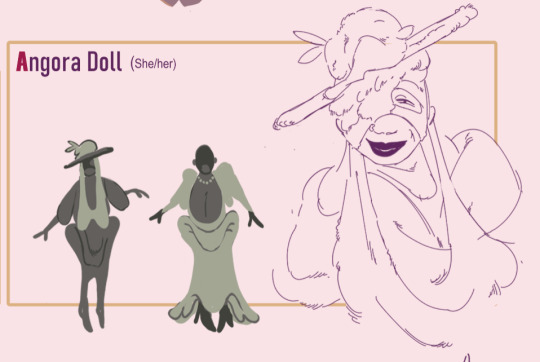
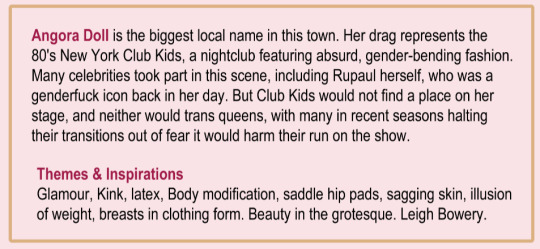
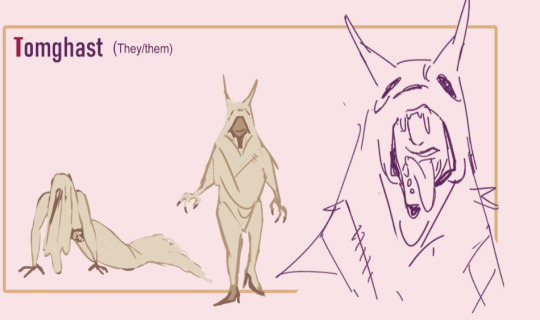
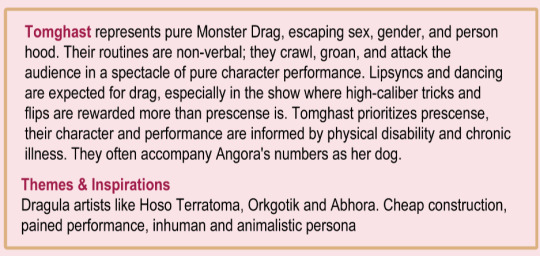
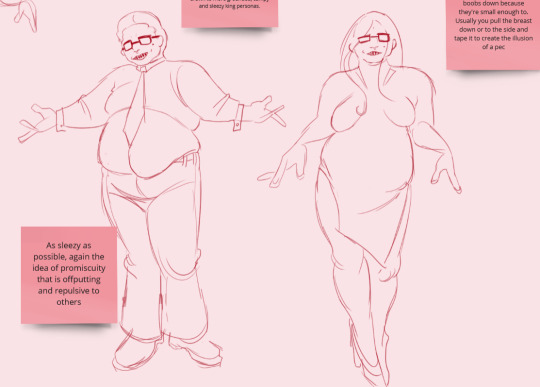
If you're wondering why I'm especially not posting recently it's bc I'm doing my final uni year and major project. Check my designs for it so far, a trans doll club kid, a disabled groaning creature and a queen/king butch.
#that's right baby. im making everyone in my degree and industry professionals know abt alt drag#temp name for angora. i'm not 100% set on it for her#been in a really bad pain flare all week while doing this and comms / trying to get on disability / trying to manage health shit#i'm acutally so tired. feel free to ask more abt them so i can ramble#they're all meant to challenge specific drag race standards also#horror tropical#eddie im home#vanilla sawyer angora doll#tomghast
70 notes
·
View notes
Text
.
#sometimes the twitter brainrot really does migrate to tumblr huh..#why tf would L fire his manager (and thereby management because hey.. he's the CEO) after the past 3 years of massive successes ?!#and more importantly why tf would some of you want him to ?#are people really too dense to understand how instrumental L’s management has been to the success he’s had ?#from way back went he was battlling syco and sony behind the scenes#you think he could achieve everything he has all by himself with just oli as his sidekick ? 😂#pls get a goddamn grasp on how a career at this scale in the music industry works...#and yes apparently it started as some weird joke? (haha..)#but seeing people in tags being like ‘hope it’s true!'… okay weirdos 🙄#oh and don’t even get me started on how some people talk about bmg….#lol sorry seeing so much dumb shit on twitter yesterday set me off#seeing it on here just left me disappointed..#lt management#.
37 notes
·
View notes
Note
Thank you so much for your thorough response. I'm not always good at following production companies. Please ignore this if I'm overstepping, I've already asked for a lot of your time and research, but other than 9naa are there other companies you boycott because of how they treat actors? I know there were some issues with 2moons and I know there were some issues for Saint, though those were long before my time in the fandom.
That's completely understandable. There's so many companies now that do BL - some of them aren't even primarily into entertainment (a skincare company did The Promise, and I think there's at least one car dealership delving into BL things now too, while other companies are purely for investment and why would you even follow those if they're only about money?).
I'm trying to stay up-to-date because I'm interested in the industry side of things but I probably missed a lot of stuff as well.
Here's what I know for sure:
Motive Village
Motive Village did 2Moons. Then they did 2Moons2 with the same characters (and story!) but all different actors. THEN they did 2Moons: The Ambassador with (some of) the same characters (and story) and different actors again.
Why did they do that? Probably because they're so bad at managing their actors that they're all collectively running away as soon as possible. But that's not even the worst part. One of the actors from 2Moons2, Din Teerapat (then known as Earth Teerapat), was actively excluded and blocked from all promotion while being completely trapped in his contract. Other actors weren't paid and were badly mismanaged. Then there's very serious allegations that Din might have been (I'm phrasing this as carefully as possible) harrassed by one of MV's higher-ups. Din never spoke about it and has since decided to move on.
Aam Anusorn, who directed 2Moons2 (and isn't related to MV in any way) has spoken up about this, and his series Call It What You Want is supposedly based on some of what happened.
Other actors who "escaped" MV include Bas Suradej, Copter Panuwat, Kimmon Warudom (who went on to sign with Star Hunter for a while and did the very delightful Gen Y which is basically 2Moons fanfiction), Tae Darvid & Tee Thanapon (who did Triage), Boun Noppanut (who was never with MV but wasn't paid for his guest role in 2Moons), Joong Archen, Pavel Naret, Benjamin Brasier & Dome Woranart. The latest escapee seems to be Park Anandatej who will be in Monster next Door.
Benjamin Brasier and Dome Woranart seem to be back to working with Motive Village recently and I'm honestly a bit ?? ??? about it.
Y.Entertainment
Y.Ent did Unforgotten Night and For Him the Series. Recently, the leads of For Him, Tor Atagorn and Dew Nitikorn (along with Yoon Phusanu who starred in Unforgotten Night and had a cut guest role in For Him), have come forward saying that they were never paid for their work in For Him. Additionally, Tor has opened up about being continuously harrassed and stalked by someone on and off set during filming. It affected him so badly that he is now in therapy and on medication for depression and anxiety.
Just yesterday Yoon Phusanu held a press conference because he still hasn't been paid. He's one of the few actors who actually have the means to hire lawyers and go against his company. His lawyer has stated that not many young actors in Thai BL can afford to do the same.
9NAA
9NAA did Check Out, Venus in the Sky and, most recently, Kiseki Chapter 2. You know about 9NAA already but for everyone else reading this and wanting to know what's going on with them, here's a short summary.
Here's some other companies involved in Thai BL who have done some mildly questionable things:
Maximon who have since rebranded as Harikarn (with another company now named Maximon that might also have been emerged from the original Maximon... it's complicated) might have not paid their actors for Chains of Heart until the series had long finished airing. Haii Sarunsathorn and Boom Raweewit, the leads, made some very carefully worded joke tweets about it - which kind of makes you go hmmmm. There was also a freelancer who spoke up about not getting paid for his art, but nothing more ever came of it. Both Maximon and Harikarn have since ramped up production again - with some of the same actors - so I'm not especially concerned for the moment.
Well.Thailand recently annouced a bunch of new BLs and then promptly went bancrupt. One of their former producers immediately picked up the slack and founded EntSync in order to take over all projects and talent. They've already held the blessing ceremony for Black Forest and everything seems to be back to normal for the moment except for Born to be Y the series which should have aired this month but has since been indefinitely postponed.
Fix Entertainment is behind The Whisperer and is holding the series' final episode hostage because apparently a planned fanmeeting didn't sell enough tickets so they seem to have run out of funds. This is very ?? ???
Studio on Fire recently announced that one of the leads of their upcoming series Live in Love will be replaced, citing creative differences and "different work attitudes" (hate that phrase yet?) as the reason. Weirdly enough, said lead (Non Ratchanon) is from another company and was part of an acting pair with their own actor Hearth Chindanai. Hmmmmmm.*
*This kind of reminds me of what happened with Saint Suppapong during and after Love By Chance when he was basically almost bullied out of the industry because he wasn't with the same company as all of the other actors.
As I said, there's probably more but I didn't include actor scandals, unfounded rumours or stuff that has already been resolved.
#ask#bl industry#jane watches stuff#you guys pls feel free to add more examples#i didn't include jinloe because as weird as we think it is to cast a minor opposite an adult in a mature bl#it's neither illegal nor exploitative by default#i also didn't include what happened during love by chance and after why r u because this was purely due to inappropriate management#and what happened with goldeneyesview recently is actually incredibly sad and i urge you to support love syndrome the beginning
75 notes
·
View notes
Text
I don't think people are honestly taking into consideration the fact that shitty/overwhelming work conditions DO impact relationships outside of the work environment. I haven't, until more recently, especially pertaining to my own work conditions.
Imagine working and socializing with customers and co-workers for 8+ hours a day, and all the good and shitty things that come with it...to then come home and do more work, and trying to socialize with friends/partners after all that.
Yeah, be for real. Cut yourself some slack. If you're friends with people with this sort of work-life? Cut them some slack (that isn't to excuse poor treatment of others, mind you)
We're just on the fritz as it is. Frazzled, even.
#working customer service#retail#in the service industry#all sucks the energy out of you#one of my team members called off today and i thought i was going to work the entire shift alone#that's what it means to be an assistant manager lol#thankfully i have another team member scheduled for today yippee
99 notes
·
View notes
Text
do you ever just stop and think about how each band member is so incredibly talented in their own way and we get to watch not only that but the magic that happens when they work together?
#5 seconds of summer#5sos#ashton irwin#let’s start with ash; a very talented musician at all things technical; at integrating the practical with the sound; at creating Hits#luke hemmings#who I was just thinking about the emotions and atmospheres he creates with music alone. says so much in the words he uses. is so vulnerable#calum hood#probably one of the most community minded people I can think of in any entertainment industry. deep thinker; amazing singer; teammate#michael clifford#everything about his story fascinates me. amazing at evoking empathy; connecting with fans. incredibly talented musician; bandmate; etc#how on gods green earth did these guys manage to just. meet each other and start making music when we knew none of this?#when they were just starting to grow into who they are??
37 notes
·
View notes